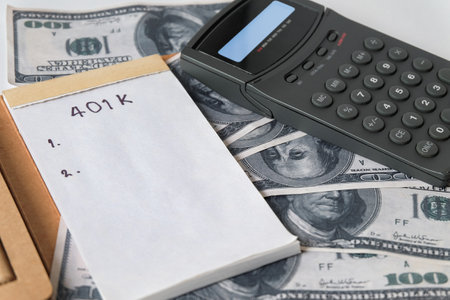Understanding VAT Fundamentals for Trades
Value Added Tax (VAT) is a crucial aspect of financial management for any UK trades business. Understanding the essentials of VAT ensures your business remains compliant and financially efficient. In the UK, VAT registration becomes mandatory when your taxable turnover exceeds the current threshold, which is set at £85,000 per annum. However, even if your turnover is below this limit, voluntary registration can offer benefits such as reclaiming input VAT on business expenses.
VAT Registration: When and Why
Registering for VAT is not only a legal obligation once you cross the threshold but can also enhance your business’s credibility with suppliers and clients. For many small trades businesses, registering early can help streamline record keeping and create more competitive pricing structures. Its essential to monitor your rolling 12-month turnover closely to avoid penalties for late registration.
VAT Rates Explained
There are three main VAT rates in the UK: standard (20%), reduced (5%), and zero-rated (0%). The rate applicable to your services or products depends on their nature and classification by HMRC. Most building and maintenance work falls under the standard rate, but certain energy-saving materials or residential conversions may qualify for the reduced or zero rates. Knowing which rates apply to your business activities prevents costly mistakes in invoicing and tax returns.
The Impact of VAT on Trades Businesses
For small trades businesses, VAT affects cash flow, pricing strategies, and administrative workload. Charging VAT means you must keep accurate records of all sales and purchases, submit regular VAT returns—usually quarterly—and pay HMRC any VAT collected minus the amount you have paid on business-related goods and services. This process requires diligent bookkeeping to ensure that you are neither overpaying nor under-declaring your VAT liability. Navigating these essentials helps UK trades businesses maintain compliance while optimising their cash position in a competitive market.
2. Complying with UK Tax Obligations
Staying compliant with HMRC’s tax rules is non-negotiable for UK trades businesses. Below, you’ll find a step-by-step guide to help you register for taxes, meet critical deadlines, and identify allowable expenses specific to the trades sector.
Step 1: Registering for Taxes
If you’re starting out as a sole trader, partnership, or limited company, prompt tax registration is your first priority. Here’s how:
| Business Structure | Registration Requirement | Where to Register |
|---|---|---|
| Sole Trader | Register for Self Assessment and Class 2 National Insurance | GOV.UK Self Assessment Portal |
| Partnership | Register the partnership and each partner for Self Assessment | GOV.UK Partnership Registration |
| Limited Company | Register with Companies House and for Corporation Tax within 3 months of starting to trade | Companies House & HMRC |
Step 2: Keeping Up with Tax Deadlines
Missing tax deadlines can lead to hefty penalties and cash flow headaches. Here are the key dates every UK trades business should mark in their calendar:
| Tax Type | Deadline | Description |
|---|---|---|
| Self Assessment (Sole Traders/Partners) | 31 January (online) / 31 October (paper) | Submit your tax return and pay any tax due for previous tax year |
| Corporation Tax (Limited Companies) | 12 months after end of accounting period (return); 9 months and 1 day after end of period (payment) | File return and pay corporation tax owed |
| VAT Returns (if VAT registered) | Usually quarterly—one month and 7 days after period ends | Submit online VAT return and payment to HMRC |
| PAYE & National Insurance (if employing staff) | Monthly—by the 22nd (electronic) or 19th (postal) | Pay deductions from payroll to HMRC |
Step 3: Understanding Allowable Expenses for Trades Businesses
You can deduct certain business expenses from your taxable profits, reducing your overall tax bill. For trades businesses in the UK, typical allowable expenses include:
- Materials & Supplies: Costs of raw materials, parts, and goods for resale.
- Tools & Equipment: Purchase, repair, or replacement costs; consider annual investment allowance.
- Vehicle Running Costs: Fuel, servicing, insurance—either actual costs or simplified mileage rate.
- PPE & Workwear: Uniforms or protective clothing required for work.
- Subcontractor Payments: If you use CIS-registered subcontractors.
- Premises Costs: Rent, utilities, business rates on workshops or offices.
- Professional Fees: Accountancy fees, professional memberships related to your trade.
Keen record keeping is essential—always keep receipts and maintain digital records wherever possible. This not only ensures accurate claims but also futureproofs your business for Making Tax Digital requirements.
Your Next Step: Stay Organised & Seek Professional Help if Needed
The complexity of UK tax law means that even experienced tradespeople can miss something important. Consider using cloud bookkeeping software or consulting a chartered accountant to keep your numbers accurate, your cash flow healthy, and your business compliant year-round.

3. Bookkeeping Best Practices for Tradespeople
Effective bookkeeping is fundamental for every UK trades business aiming to stay compliant and financially healthy. By establishing structured systems for organising receipts, invoices, and payments, tradespeople can avoid common pitfalls and ensure their records stand up to scrutiny from HMRC. Below, we outline practical methods tailored to the daily realities of trades businesses.
Organising Receipts: The Digital Advantage
Paper receipts are easily lost or damaged on busy job sites. To combat this, utilise smartphone apps designed for receipt capture—simply snap a photo and upload it directly into your bookkeeping software. This not only keeps records secure but also makes them easy to retrieve for VAT claims or end-of-year tax returns. Always categorise receipts by project or expense type to streamline tracking and reporting.
Efficient Invoicing Systems
Timely and accurate invoicing is crucial for cash flow management. Invest in cloud-based accounting platforms such as Xero or QuickBooks, which allow you to generate branded invoices on the go and automate payment reminders to clients. Ensure each invoice details the work completed, materials used, VAT breakdown (if registered), and clear payment terms—this minimises disputes and late payments.
Payments: Tracking What Comes In and Out
Separate your business and personal bank accounts to simplify transaction tracking. Reconcile your accounts weekly, matching bank statements with invoices issued and supplier payments made. For cash transactions—a staple in many trades—always issue receipts and log them immediately in your accounting system. This discipline is key for transparent record-keeping and smooth HMRC inspections.
Adopting a Routine: Consistency Matters
Set aside a dedicated time each week—Friday afternoons work well for many tradespeople—to update your books, file digital copies of paperwork, and chase overdue payments. Regular maintenance reduces errors, prevents paperwork pile-ups, and gives you a clear picture of your business’s financial health at any moment.
Professional Support When Needed
If bookkeeping becomes overwhelming as your business grows, consider hiring a certified bookkeeper familiar with UK tax law and the specific challenges faced by trades businesses. Their expertise ensures compliance, maximises allowable deductions, and frees up your time to focus on delivering quality workmanship.
4. Navigating VAT Returns and Record-Keeping
For UK trades businesses, managing VAT returns and maintaining accurate records are not just legal requirements—they’re essential to keeping your cash flow healthy and avoiding costly penalties. Here’s a clear, step-by-step approach to preparing and submitting VAT returns while ensuring compliance with HMRC’s standards.
Step-by-Step Guide to Preparing VAT Returns
- Collate All Sales Invoices: Gather every sales invoice for the period. Ensure each includes your VAT number, correct rates, and customer details.
- Record Purchase Invoices: Log all business-related purchases where VAT was charged. Double-check that suppliers’ VAT numbers are present and valid.
- Reconcile Bank Transactions: Match income and expenses from your bank statements to invoices and receipts for accuracy.
- Calculate Output and Input VAT: Work out total VAT collected on sales (output VAT) and total VAT paid on purchases (input VAT).
- Complete Your VAT Return: Enter these figures into your online VAT return form via HMRC’s Making Tax Digital-compliant software.
- Submit Before Deadline: File the return by the set deadline—usually one calendar month and seven days after the end of your accounting period.
- Pay Any VAT Due: Arrange payment promptly to avoid surcharges or interest from HMRC.
Maintaining Compliance: Record-Keeping Essentials
You must keep digital records for at least six years (or ten years if you use the VAT MOSS scheme). These should include:
- Date and value of each supply
- VAT rate applied
- Name of customer or supplier
- Your business’s VAT account summaries
Recommended Record-Keeping Systems
| System Type | Description | HMRC Compliant? |
|---|---|---|
| Cloud Accounting Software (e.g., Xero, QuickBooks) |
Automated invoicing, expense tracking, direct submission to HMRC | Yes (with MTD integration) |
| Spreadsheets (Excel, Google Sheets) |
Manual entry, must be compatible with bridging software for submissions | Yes (if linked to MTD-compatible tool) |
| Papers/Manual Records | No longer accepted for digital submissions under Making Tax Digital rules | No |
Top Tips for Smooth Compliance
- Set monthly reminders to update records—don’t leave it until quarter-end.
- If in doubt, keep the receipt. HMRC may request supporting documents during an inspection.
- Avoid mixing personal and business finances; use a dedicated business bank account.
- If you make frequent zero-rated or exempt sales, track these separately for accurate reporting.
- Back up digital records regularly—in case of system failures or audits.
Staying on top of your VAT returns and record-keeping doesn’t just satisfy HMRC—it helps you understand your numbers, manage cash flow, and grow your trades business with confidence.
5. Cash Flow Management for UK Trades
Understanding the Importance of Cash Flow
For trades businesses in the UK, effective cash flow management is crucial to maintain smooth operations and meet financial obligations such as VAT and tax payments. Unlike salaried industries, tradespeople often face irregular payment cycles and seasonal fluctuations, making it essential to have a clear strategy for managing incoming and outgoing funds.
Techniques to Manage Cash Flow
Prompt Invoicing and Credit Control
Issue invoices promptly upon job completion and follow up consistently on overdue payments. Consider offering small discounts for early settlements or implementing stricter credit terms with new customers. Using digital invoicing tools can also help track outstanding payments efficiently.
Monitor Expenses Diligently
Keep a close eye on both fixed and variable expenses, from supplies to vehicle maintenance. Regularly review your direct debits and standing orders to identify unnecessary outgoings. This will prevent surprises and ensure you only spend what’s necessary.
Budgeting for Tax Bills and VAT
Set Aside Funds Proactively
Open a separate business savings account dedicated to your tax and VAT liabilities. Each time you receive payment, transfer a percentage (commonly 20-30%) into this account based on your projected tax rate. This “ring-fencing” ensures you’re not caught short when HMRC deadlines come around.
Forecasting Your Liabilities
Use bookkeeping software or spreadsheets to project upcoming VAT returns and corporation or self-assessment tax bills. Regular forecasting enables you to adjust spending or chase late payments in advance of big outgoings.
Preparing for Fluctuations in UK Trades Work
Build an Emergency Fund
Aim to build up at least one month’s worth of business expenses as a buffer against slow periods, bad weather, or unexpected equipment repairs. This financial cushion reduces stress during quieter months typical of many UK trades.
Flexible Pricing Strategies
Review your pricing regularly to reflect changes in material costs or demand within your sector. Transparent communication with clients about price adjustments due to market shifts is key to maintaining trust while protecting your margins.
Summary: Stay Proactive, Not Reactive
The most successful UK trades businesses treat cash flow management as a continuous process rather than a last-minute scramble. By combining proactive budgeting, disciplined expense tracking, and strategic planning for the natural ups and downs of the industry, you’ll be well-equipped to meet all your financial commitments—and sleep soundly at night.
6. Leveraging Digital Tools and Making Tax Digital (MTD)
Embracing digital solutions is now a necessity for UK trades businesses, particularly in light of HMRC’s Making Tax Digital (MTD) initiative. MTD requires VAT-registered businesses with a taxable turnover above the VAT threshold to keep digital records and submit VAT returns using compatible software. This shift aims to reduce errors, increase transparency, and streamline compliance.
Choosing the Right Software
When selecting accounting software, look for HMRC-recognised platforms such as Xero, QuickBooks, Sage, or FreeAgent. These tools not only support real-time bookkeeping and automatic bank feeds but also offer seamless VAT calculation and submission directly to HMRC. Automation features help minimise manual data entry, reducing the risk of costly mistakes and freeing up time for core business activities.
Meeting Legal Requirements
To comply with MTD, your software must be able to:
- Maintain digital records of sales, purchases, and expenses
- Generate accurate VAT returns
- Submit these returns digitally to HMRC on a quarterly basis
It’s crucial to ensure that your systems are up-to-date and your staff are trained on these platforms. Non-compliance can result in penalties or increased scrutiny from HMRC, so investing in robust digital infrastructure is essential.
Benefits Beyond Compliance
Beyond fulfilling legal obligations, utilising modern accounting software provides valuable business insights through dashboards and real-time reporting. You can monitor cash flow trends, track outstanding invoices, and forecast tax liabilities more accurately—empowering you to make strategic decisions based on reliable data.
In summary, adopting digital tools not only ensures compliance with MTD regulations but also strengthens your financial management framework. For UK trades businesses aiming for sustainable growth and operational efficiency, leveraging these technological advancements is no longer optional—it’s an integral part of staying competitive in today’s market.


